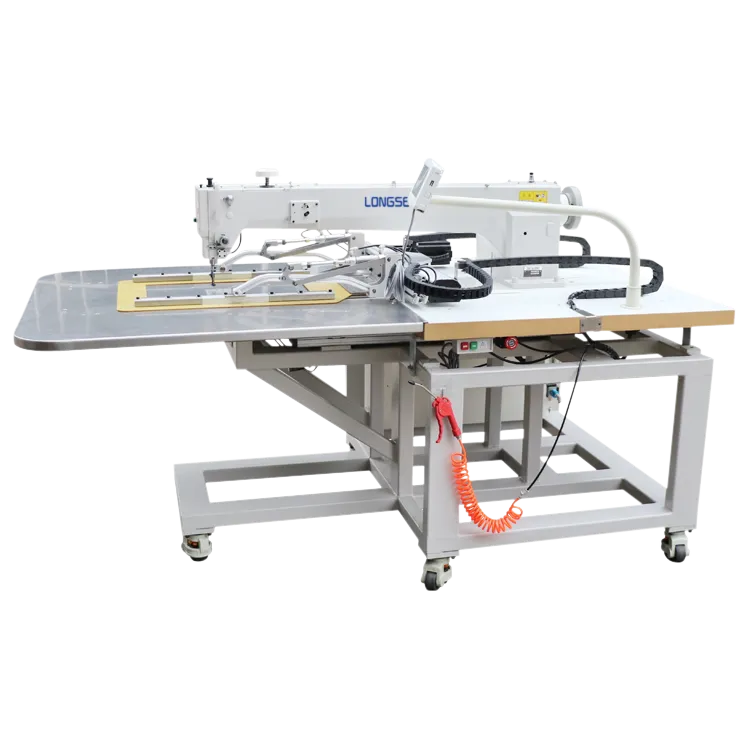sewing machine needle for faux leather
Choosing the Right Sewing Machine Needle for Faux Leather
When it comes to crafting with faux leather, a material celebrated for its versatility and accessibility, selecting the right tools is just as important as the fabric itself. One essential tool that often goes overlooked is the sewing machine needle. Using the correct needle can make a significant difference in the quality of your work, preventing common issues such as skipped stitches, fabric puckering, and needle breakage. If you're working with faux leather, understanding the right needle type and size is crucial for achieving professional results.
Understanding Faux Leather
Faux leather, also known as synthetic leather or vegan leather, is a man-made fabric that mimics the look and feel of genuine leather. It is made from various materials such as polyurethane (PU) or polyvinyl chloride (PVC). While faux leather is easier to care for and generally more affordable than real leather, it does present some unique challenges when it comes to sewing. The material can be thick, non-stretch, and slippery, all of which require careful consideration when selecting your needle.
Types of Needles for Faux Leather
When sewing faux leather, it's essential to choose a needle designed to handle the specific characteristics of the fabric. Here are a few types of needles that work well with faux leather
1. Leather Needle Leather needles are specifically designed for sewing through thick, dense materials like leather and faux leather. They feature a sharp, wedge-shaped point that easily penetrates the fabric without causing damage. This type of needle is critical for preventing ripping or tearing the faux leather during the sewing process.
2. Jersey/Ballpoint Needle If you're working with a stretch faux leather that has elastic properties, a ballpoint needle is a suitable choice. This needle has a rounded tip, which allows it to slide between the threads of the fabric rather than piercing them, making it ideal for knit and stretch fabrics. It helps to prevent skipped stitches, which can be common when sewing with stretch materials.
3. Universal Needle If you are in a pinch and don't have leather or ballpoint needles on hand, a universal needle can work as a versatile option. While not specifically designed for faux leather, a sharp universal needle can handle many sewing projects adequately. However, it's best to use this as a last resort when specialized needles are unavailable.
Needle Size Matters
sewing machine needle for faux leather

In addition to choosing the right needle type, selecting the proper needle size is equally important. For sewing faux leather, a needle size between 80/12 and 100/16 is typically recommended. Here’s a simple breakdown
- 80/12 This size is suitable for lighter-weight faux leathers, thin vinyl, or when you want a delicate finish. - 90/14 A standard choice for medium-weight faux leather, providing a balance between strength and finesse. - 100/16 This larger size works best for heavier, thicker faux leathers that require more power to penetrate the material.
Always start with a new needle whenever you're beginning a project. A dull needle can cause damage to the fabric and create unwanted complications, such as fraying or skipped stitches.
Additional Tips for Sewing Faux Leather
1. Use the Right Foot Consider using a Teflon or walking foot attachment on your sewing machine. These specialized feet help guide the slippery faux leather, preventing it from sticking to the machine and allowing for smoother sewing.
2. Adjust Tension and Stitch Length A slightly longer stitch length (2.5 to 3.5) is often recommended for sewing faux leather to reduce the chances of puncturing the material too many times. Adjust the upper tension as necessary to ensure a balanced stitch.
3. Test Your Stitches Always perform a test run on a scrap piece of the same faux leather before sewing your final project. This will help you identify any adjustments needed in terms of needle size, tension, or stitch length.
4. Avoid Pins Instead of using pins, consider clips or fabric weights to hold your pieces together, as pinholes can be noticeable in faux leather and compromise the aesthetic.
Conclusion
Sewing with faux leather can yield stunning results when the right tools are used. By selecting the appropriate sewing machine needle, you can enhance your sewing experience and achieve a polished finish on your projects. Whether you choose a leather needle, a ballpoint needle for stretch, or a universal needle, remember that the size and type matter. With patience and practice, you'll find the joy of creating beautiful faux leather items, ready to impress anyone who lays eyes on your work.
-
Industrial Cylinder Arm Sewing Machine: Revolutionizing Heavy-Duty SewingNewsJul.28,2025
-
Cylinder Arm Sewing Machine: Perfect for Special Sewing ApplicationsNewsJul.28,2025
-
Cylinder Bed Sewing Machine: Essential for Sewing Complex MaterialsNewsJul.28,2025
-
Heavy Duty Sewing Machine: The Essential Tool for Industrial ApplicationsNewsJul.28,2025
-
Computerized Pattern Sewing Machine: Revolutionizing Precision StitchingNewsJul.28,2025
-
Heavy Duty Industrial Sewing Machine: Power Meets PrecisionNewsJul.28,2025
-
Leather Sewing Machine: The Industrial Standard for Tough MaterialsNewsJul.18,2025





























